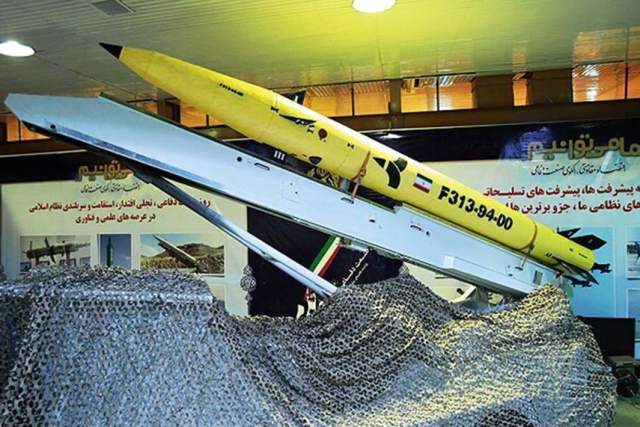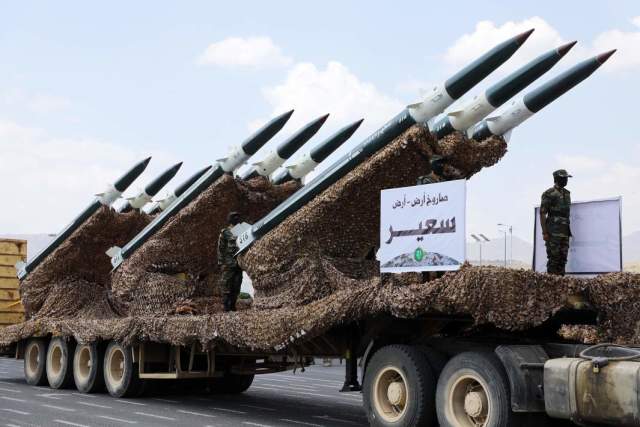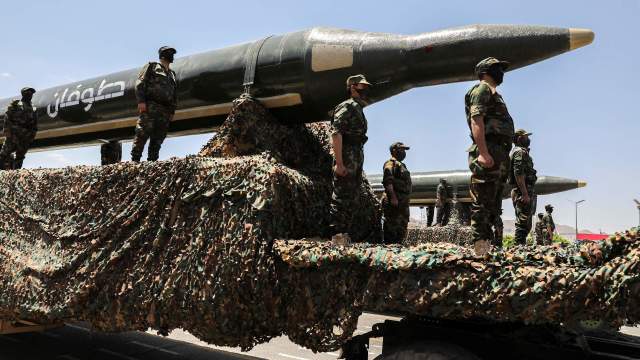The group's arsenal includes a variety of types of cruise and ballistic missiles
The Houthis, the Arabian Peninsula, the Red Sea, the missile threat and attacks on Yemen by international forces led by the United States — all this has already become a constant news background. One of the reasons for the escalation is the threat of Houthi missile attacks on ships in the Red Sea. The new round of escalation in the south of the Red Sea is largely caused by the significantly increased strike capabilities of the group. Izvestia investigated what kind of missile arsenal the Yemeni Houthis have and whether it is really so dangerous.
The history of the confrontation
In 2015, the Yemeni capital Sanaa was captured by militants of the Ansar Allah movement, who also bear the common name "Houthis" in honor of their leader Hussein al-Houthi, who died in 2004. The movement captured most of the country, repelled the invasion and air strikes by a coalition of states led by Saudi Arabia and actively supported the Palestinian Hamas, opposing Israel and the United States.
The Houthi movement was initially supported only by Iran. It was with Iranian military assistance that their ability to withstand the strikes of the Arab coalition and the possibility of inflicting painful strikes on targets in Saudi Arabia were associated. Moreover, the strikes were carried out both by drones and relatively modern ballistic and cruise missiles.

The Galaxy Leader cargo ship captured by the Houthis in the Gulf of Aden
Image source: Photo: REUTERS/Houthi Military Media
Since November 2023, the Houthis began threatening Israeli naval vessels in the Red Sea, and later ships from other countries. In fact, all maritime traffic on the route from the Suez Canal to the shores of Africa, to the Persian Gulf and to Asia can be controlled from the territory occupied by the group today — it is here that the shortest route from Europe passes.
According to American media, since November 19, 2023, the Houthis have carried out more than 20 attacks on merchant ships in international waters. At the same time, they claim that they attack only ships that are somehow connected with Israel. Moreover, both drones and cruise and ballistic missiles are again used against naval targets. In addition, they carried out several launches of various types of missiles at the city of Eilat in southern Israel — they were shot down, but such strikes themselves show the serious missile capabilities of the Houthis.
Already on December 3, an American Arleigh Burke-class destroyer used an air defense system against two Houthi drones moving in its direction, after which it assisted commercial ships that were attacked by ballistic missiles. And finally, on January 12 of this year, ships and aircraft of the United States and Great Britain began to strike at the missile potential of the Houthis. The escalation around Yemen has reached a whole new level.
An impressive arsenal
What do the followers of Hussein al-Houthi have? Over the past few years, their missile arsenal has grown significantly. Today, these are both cruise and ballistic missiles of different generations, mainly of Iranian design. Of course, some of the outdated missile systems of Soviet origin have been restored by the Houthis with Iranian help. It is understandable — the Houthi Yemen is Iran's most consistent ally in the modern world.

Photo: REUTERS/Khaled Abdullah
Image source: iz.ru
Some of the anti-ship missiles that the Houthis have come from the USSR. Back in the mid-2010s, they took control of all Yemen's reserves, which included Soviet-designed anti-ship missiles such as the P-15M Termite with a range of up to 80 km, as well as their Chinese counterparts C-801. These systems have been repeatedly demonstrated at parades, but they were probably replaced in combat units by more modern Iranian analogues of Chinese anti-ship missiles with a range of up to 200 and even up to 300 km. We are talking about Ghader and Ghadir missiles, which are also at the disposal of the Houthis and with which, theoretically, commercial shipping in the Red Sea can be completely stopped.
But that's not all. Anti-ship cruise missiles are dangerous, of course, but technically they can be shot down by a variety of air defense systems of modern ships. It is much more difficult to deal with ballistic missiles, and even more so with homing missiles. And these have been repeatedly demonstrated by the Houthis.
The Asef and Tankil ballistic missiles with a range of up to 450-500 km appear to be localized versions of the Iranian Fateh 313 and Zohayr missiles in Yemen. They are equipped with infrared homing heads, which allow them to attack high-contrast mobile targets such as ships. The mass of the warheads is about 300 kg, which, taking into account the rate of fall, makes it possible to disable or even sink almost any commercial ship in case of a successful hit.

The Iranian Fateh-313 missile
Image Source: Photo: commons.wikimedia.org/Fars Media Corporation
Of the exotics that can be found in the East, it is worth mentioning Mohit, which is an old Soviet anti-aircraft missile of the S-75 air defense system, adapted for use against ground targets and equipped with an infrared homing head. A large number of such systems were inherited by the Houthis from the reserves of the Yemeni army. During the revision, Iranian technologies and the Iranian homing system were clearly used. The effectiveness of these missiles, of course, may raise questions, but these are weapons that can be used on ships.
In addition to all of the above, the Houthis have some arsenal of long-range liquid-fueled missiles, which are of Iranian and North Korean origin. These products, apparently, can be intercepted by the modern Israeli Arrow missile defense system, but nevertheless they pose a serious threat at a range of even several thousand kilometers. The Houthis probably have a limited supply of such missiles at their disposal. In addition, these systems require relatively long preparation for launch, which may allow the aviation of the international coalition to search for and destroy launchers. If it comes to that, of course.

Photo: Global Look Press/XinHua/Mohammed Mohammed
Image source: iz.ru
In addition, the Houthis have long-range cruise missiles based on Iranian missiles, which, in turn, are recreated versions of Soviet X-55 air-launched missiles. In the 1990s and 2000s, they were received by Iran, probably from Ukraine. Such missiles can have a range of more than 2 thousand km, and their main targets may be stationary objects in Israel. The range allows, and, apparently, the Houthis have already tried to launch such missiles at the Israeli city of Eilat. So far, they are straying, but in case of a successful combination of circumstances with their missile arsenal, the Houthis may well stop commercial shipping in the Red Sea. And thus the shortest route from Europe to Southeast Asia will be cut.
Dmitry Kornev

